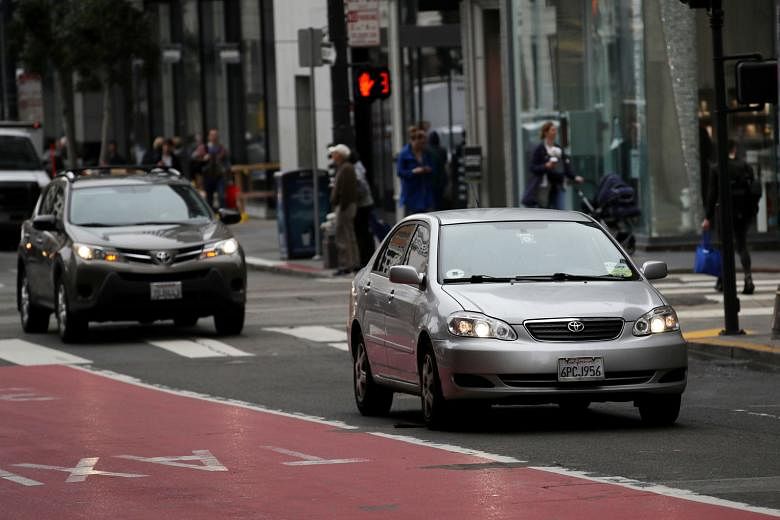SAN FRANCISCO • Uber, the ride-hailing service that has upended transportation around the world, took a major step towards the largest initial public offering (IPO) in years when it officially unveiled its finances in a prospectus on Thursday.
The offering, which could value Uber at around US$100 billion (S$136 billion), would be the biggest since China's Alibaba Group began trading on the New York Stock Exchange in 2014.
But the prospectus renewed questions about how sustainable Uber's business actually is. The company said in the filing that it lost US$1.8 billion last year, excluding certain transactions, on revenue of US$11.3 billion. The prospectus also showed that its rocket-ship trajectory for revenue growth was beginning to slow.
One potentially major concern for Uber is that it does not appear set to turn a profit in the near future. In the United States, the company is burning cash as it battles its arch rival Lyft, cutting prices for passengers and spending to recruit drivers. In other parts of the world, Uber also provides discounts to riders and incentives to drivers as competitors fight for market share.
And the company is investing heavily in businesses in areas such as food delivery and scooters.
"We will not shy away from making short-term financial sacrifices where we see clear long-term benefits," Mr Dara Khosrowshahi, Uber's chief executive, wrote in a letter accompanying the prospectus.
In its filing, Uber said it made a profit of US$997 million last year, largely from selling parts of its business in places like South-east Asia and Russia. Excluding those gains, plus other items, Uber lost US$1.8 billion for the year. In 2017, its net loss totalled US$4 billion.
Revenue growth also slowed. Last year, its revenue rose 42 per cent to US$11.3 billion from a year earlier. But revenue in 2017 had more than doubled from 2016. Uber revealed in the prospectus that it is heavily dependent on just five cities for nearly a quarter of its total bookings: Los Angeles, New York, San Francisco, London and Sao Paulo.
Its number of monthly users, who turn to Uber for not only rides but also services like food delivery, was 91 million last year, up 34 per cent from a year earlier. But user growth, which had risen 51 per cent in 2017, also slowed. At the same time, Uber's spending continues to rise, reaching US$14.3 billion last year, up 19 per cent from 2017.
While revenue growth in its ride-hailing business slowed, its food delivery service, Uber Eats, is soaring. Revenue from Uber Eats nearly tripled to US$1.5 billion last year from US$587 million a year earlier.
NYTIMES

